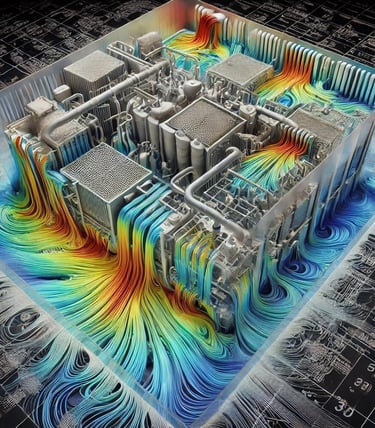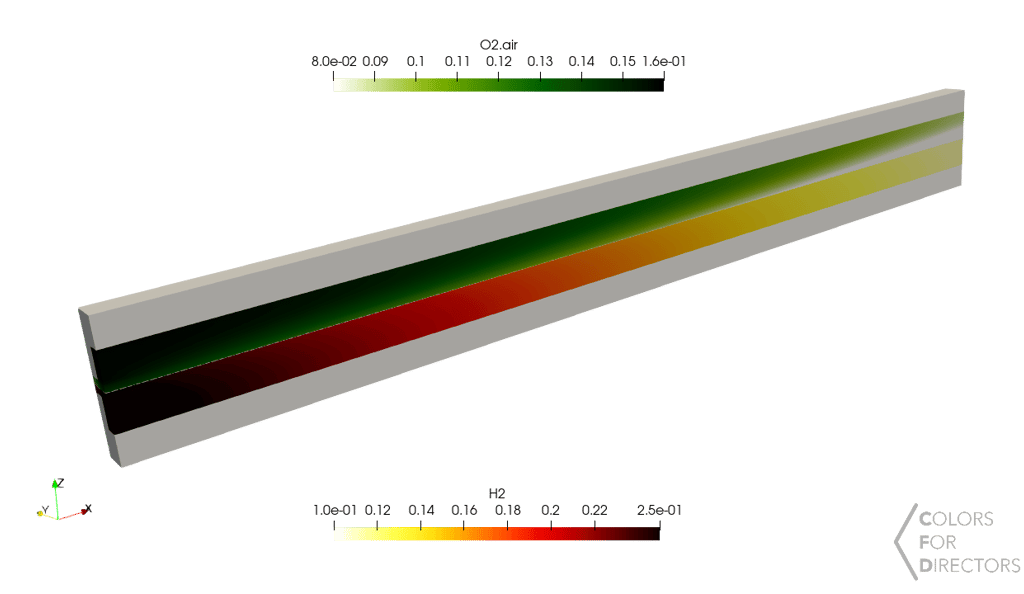Enhancing Fuel Cell Performance with Computational Fluid Dynamics
3/28/20252 min read


In our previous discussion, we explored the growing fuel cell market and the role of computational simulations in driving innovation. Among these technologies, Computational Fluid Dynamics (CFD) stands out as a game-changer in optimizing fuel cell performance, efficiency, and scalability. This follow-up delves into how CFD is shaping the future of fuel cell development and commercialization.
The Critical Role of CFD in Fuel Cell Engineering
Fuel cells rely on complex fluid dynamics, electrochemical reactions, and heat transfer processes. CFD simulations provide engineers with detailed insights into these phenomena, enabling precise design optimizations. The primary areas where CFD is making a difference include:
Hydrogen Flow Distribution Optimization: CFD simulations analyze gas flow patterns within fuel cells, ensuring even hydrogen distribution across catalyst layers, minimizing energy losses, and improving efficiency.
Thermal Management and Heat Dissipation: By modeling heat generation and transfer, CFD helps design cooling strategies that prevent overheating and enhance fuel cell longevity.
Water Management in Proton Exchange Membrane (PEM) Fuel Cells: Proper water balance is crucial for PEM fuel cells. CFD enables visualization of water accumulation, helping engineers design channels that prevent flooding and ensure optimal membrane hydration.
Electrode and Catalyst Layer Design: CFD simulations help refine the microstructure of electrodes and catalyst layers, maximizing reaction surface area and improving overall fuel cell performance.
CFD-Driven Innovations in Fuel Cell Applications
CFD is revolutionizing fuel cell applications across multiple industries:
Automotive Sector: Hydrogen fuel cell vehicles benefit from CFD-optimized stack designs, reducing pressure drops and enhancing power output.
Power Generation: Stationary fuel cells leverage CFD for efficient air and fuel flow control, boosting overall energy conversion efficiency.
Aerospace and Maritime: CFD models hydrogen and oxygen flow in aircraft and ships, improving propulsion system reliability and energy density.
Overcoming Fuel Cell Challenges with CFD
Despite significant progress, fuel cell adoption faces challenges. CFD simulations address these issues by:
Reducing Prototyping Costs: Virtual testing allows for rapid iteration of fuel cell designs, eliminating the need for costly physical prototypes.
Enhancing Durability: CFD predicts degradation effects such as catalyst wear and membrane thinning, leading to more resilient designs.
Improving Scalability: High-performance computing enables CFD to model large-scale fuel cell stacks, paving the way for mass-market deployment.
The Future of CFD in Fuel Cell Development
As computational power increases, next-generation CFD tools will provide even greater accuracy in simulating real-world fuel cell behavior. Enhanced modeling capabilities will allow for dynamic adjustments in fuel cell design, improving performance and reliability across various applications.
The continued evolution of CFD-driven design will play a pivotal role in making fuel cells a mainstream clean energy solution. By leveraging advanced CFD techniques, engineers can push the boundaries of efficiency, cost-effectiveness, and sustainability.
Are you ready to enhance your fuel cell designs with CFD? Contact us to explore cutting-edge simulation solutions tailored to fuel cell innovation!




